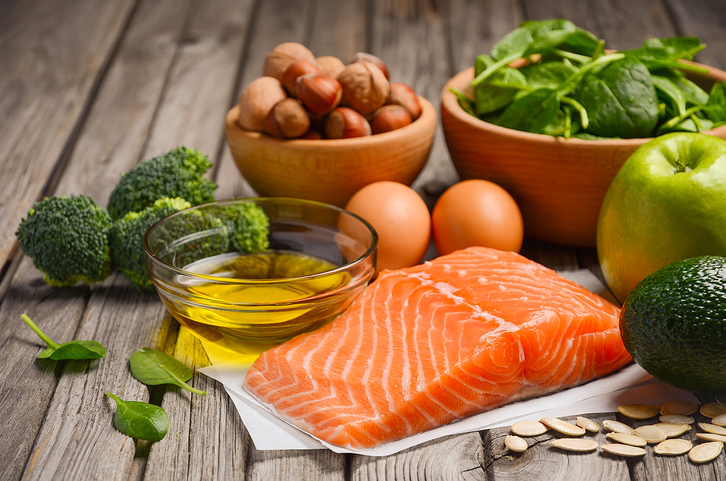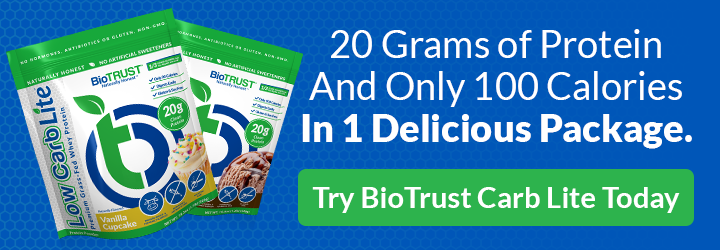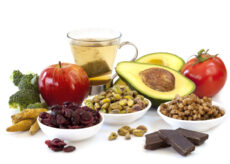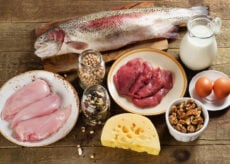The Top 5 Metabolism-Boosting Foods to Speed Up Weight Loss

“Boosting the metabolism” may very well be the “holy grail” of the fitness industry. Fortunately, there are several tried and true methods to accomplish this. Exercise, for instance, is arguably the most potent tool in the metabolism-boosting toolbox. Indeed, certain types of exercise can boost metabolism for hours after exercise. Even better, they can lead to long-term increases in resting metabolic rate by building calorie-burning muscle.
Increasing the amount of non-exercise activity (called NEAT)—such as walking, fidgeting, doing yard work, performing chores, dancing, taking the stairs, and moving throughout the day—is another effective way to increase daily energy expenditure.
Believe it or not, the food you eat—or don’t eat—can also have a significant impact on metabolism. For example, under-eating can lead to reduced metabolic rate. Meanwhile, certain metabolism-boosting foods and drinks help boost metabolic rate.
Here are five metabolism-boosting foods at the top of the list:
1. Protein-Rich Foods
All foods you eat require calories to be burned to digest, absorb, and assimilate their nutrients. This is referred to as dietary-induced thermogenesis (DIT), the thermic effect of feeding (TEF), or what we like to call thermogenic burn.
There is a general consensus that protein stimulates thermogenic burn to a significantly greater extent than other macronutrients (carbohydrates, fat).1 In fact, protein-rich foods are estimated to boost metabolism by as much as 30%, whereas as fats and carbs are typically estimated to be in the 5 – 10% range.2
This is what makes proteins one of the top metabolism-boosting foods. Protein-rich foods boost the metabolism THREE to SIX TIMES more than carbs or fats. This means you burn more calories each day when you consume a high-protein diet. It also means that protein-rich foods provide less metabolizable energy than carbs or fats. That is, your body is less likely to store calories from protein as fat.3
So, it should come as no surprise that high-protein diets increase metabolic rate and help preserve metabolic rate after weight loss.4,5 For a list of our favorite protein-rich foods, check out the following free report: The Top 55 High-Protein Foods.
2. Omega-3 Fatty Acids
The omega-3 fatty acids are “essential” fatty acids. That is, the body needs them yet cannot produce them on its own, so they must be obtained through diet and/or supplementation. The American Heart Association recommends that adults consume at least 500mg/day of EPA and DHA. Yet, the average person consumes only about a quarter of that amount (~135mg/day).6,7
EPA and DHA are well-known for their beneficial effects on heart health, brain health, cognitive function, mood, eye health, and immune function. The benefits of EPA and DHA are far reaching, as they are integrated into the membranes of our cells.
Indeed, emerging research has shown their potential benefit as one of the key metabolism-boosting foods. Researchers from Gettysburg College found that supplementation with fish oils, which supply the same types of omega-3 fatty acids found in fatty fish like salmon, for 6 weeks significantly increased fat-free mass and decreased fat mass.25 What’s more, the subjects also experienced increased metabolic rate and fat burning along with significantly decreased levels of cortisol, a stress hormone associated with increased abdominal fat storage.26
Several recent studies have shown an increase in resting metabolic rate after supplementation with EPA and DHA in both young and older healthy adults. In one randomized, controlled trial, researchers found older women supplementing with fish oils (3g/day EPA and DHA) for 12 weeks experienced significant increases in resting metabolic rate, calorie expenditure during exercise, and fat burning both at rest and during exercise.8
Even more, research has shown supplementation with fish oil may increase muscle mass, which is responsible for about 20% of resting metabolic rate and up to 80% of calorie expenditure during exercise.9,10 The best dietary sources of EPA and DHA are cold-water fatty fish such as:
- Anchovies
- Herring
- Sardines
- Salmon
Note that plant-based foods (e.g., flax, chia, walnuts) contain the omega-3 fat alpha-linolenic acid (ALA), which has a very poor conversion rate (<10%) to EPA and DHA.11
3. Coconut Oil
Coconut oil is principally made up of saturated fat (about 92%), with as much as 70% of that being a special type of fat called medium-chain triglycerides (MCTs). This makes coconut oil unique among dietary fats. You see, unlike the more common long-chain fats (LCFs), MCTs are easily burned for energy and are far less likely to be stored as fat.12
In fact, MCTs are viewed as “functional” fats that provide a host of health benefits. They’ve been shown to lower body weight, improve markers of metabolic health, reduce abdominal fat, and improve insulin sensitivity.13 Coconut oil is a very rich source of this unique, health-promoting saturated fat.
Research has also shown that the MCTs found in coconut oil have a significant metabolism-boosting effect. In one study, researchers found consuming MCTs increased metabolism significantly more than eating LCFs from other foods. As a matter of fact, participants who consumed MCTs lost significantly more weight and burned more fat than the group consuming LCFs.14
Researchers have also found consuming just 1 – 2 tablespoons daily of MCTs can elevate the metabolism by as much as 5%.15 The acute rise in calorie burning with MCTs results not only apply to short-term feeding studies. Research has shown this elevation in metabolism continues even over prolonged periods of time.16 What’s particularly interesting is that this increase in energy expenditure appears to be met by a subsequent increase in fat burning.
4. Resistant Starch
Resistant starch is so named because it is a non-digestible carbohydrate (i.e., fiber). The reason resistant starch have been long-considered one of the top metabolism-boosting foods is in its ability to increase satiety (feelings of fullness and satisfaction) and reduce food intake both short- and long-term.3,4 Research has also shown consumption of resistant starch increases fat burning, decreases fat storage, and improves insulin sensitivity.5,6
That’s not all. Researchers speculate that resistant starch may also increase calorie expenditure. In addition, it may also promote weight loss and preserve calorie-burning muscle.7 Not surprisingly, the resistant starch has been hyped by the popular press as a “weight loss wonder food.”
While resistant starch is not digestible by us, it is considered a “prebiotic” fiber that serves as “food” for our beneficial gut bacteria (e.g., probiotics). In other words, gut bacteria feed off resistant starch through the process of fermentation. This results in the production of key chemicals (i.e., short-chain fatty acids) that fuel our immune cells and stimulate the release of key hunger-suppressing hormones.
Several other health benefits have been associated with resistant starch in the GI tract, including enhanced laxation (that is, relaxing so it’s easier to “go”), increased uptake of minerals such as calcium, and reduced symptoms of diarrhea. As a prebiotic, resistant starch has been shown to positively influence the gut bacterial ecosystem, increasing levels of beneficial Bifidobacteria and reducing levels of pathogenic bacteria.
When resistant starches are fermented by healthy gut bacteria, a byproduct is the production of short-chain fatty acids (SFCA), which may help suppress appetite. 27,28 The content of resistant starch in food is highly influenced by preparation and processing techniques. Generally speaking, the following are good sources of resistant starch:
- Green, unripe bananas
- Uncooked, rolled oats
- Potatoes that have been cooked then cooled
- Rice that has been cooked then cooled
- White beans that have been cooked then cooled
- Lentils that have been cooked then cooled
5. Coffee and Tea
Coffee is one of the world’s most consumed drinks, trailing only water and tea. Of course, coffee is synonymous with caffeine, and there may be a host of benefits—including its place one of the top metabolism-boosting foods.
For instance, studies show coffee consumption significantly increases metabolic rate.17 In fact, consuming as little as 100mg of caffeine, which you can get from a single cup of coffee, is enough to boost metabolic rate. And it appears repeated ingestion and/or greater amounts lead to an even more pronounced effect.18 What’s particularly interesting is that this increase in resting metabolic rate is accompanied by greater oxidation of fat. Simply put, coffee and caffeine can help boost metabolic rate and increase fat burning.
While there are many health and metabolism benefits associated with regular, moderate coffee consumption (3 – 5 six-ounce cups per day), it’s important to assess and consider your tolerance to caffeine. Individual differences in caffeine metabolism apply, and genetically, some folks are “slow” caffeine metabolizers, which makes them more sensitive to the stimulatory effects (e.g., jitters, feeling wired) of the compound).
If coffee isn’t your, well, cup of tea, then you may be able to reap similar metabolism-boosting benefits from tea. Studies consistently show that green tea, which contains the catechin epigallocatechin gallate (EGCG), increases metabolic rate and the body’s use of fat for fuel. Effects that are independent of its caffeine content. EGCG appears to work by inhibiting enzymes that can shut down important fat-burning hormones (i.e., norepinephrine), thereby stoking the body’s fat-burning furnace.19
In one study measuring 24-hour calorie expenditure and fat burning, healthy men supplementing with a green tea extract providing 90mg EGCG three times daily experienced a 4% increase in metabolic rate and 3.4% decrease in respiratory exchange ratio (RER). In other words, they were burning more fat to meet the increased demand in calories.20
Researchers suggest consumption of 2 – 4 cups (i.e., 500mL – 1L) of green tea per day to reap these fat-burning and health-promoting benefits.23
The Best Metabolism-Boosting Foods
Metabolism is an encompassing term generally used to describe how many calories you expend on a daily basis. It is made up largely of resting metabolic rate, which is the number of calories your body requires to sustain vital functions at rest. However, physical activity can have a profound effect on metabolism, both in the short run and long-term. While the contribution of eating is less pronounced, certain metabolism-boosting foods can indeed have an impact. And for most, even the smallest changes can add up to make a noticeable difference.







